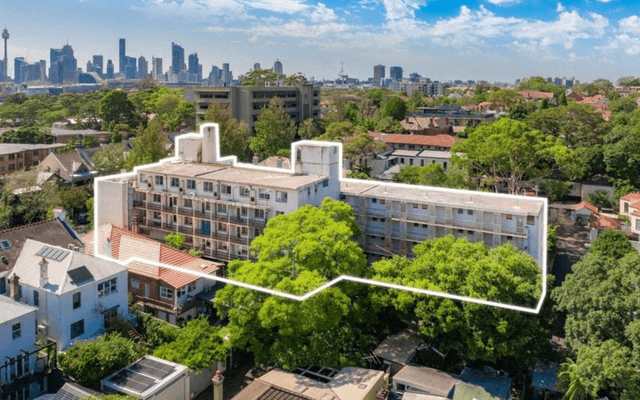This article is from the Australian Property Journal archive
THE Morrison government has promised an extra $452 million to fix the aged care sector following the release of a scathing report from the royal commission which found systemic problems plagued by substandard care and abuse of elder Australians.
The two-year investigation by commissioners Tony Pagone and Lynelle Briggs has made 148 recommendations. This is the latest after 18 previous inquiries in the last 24 years.
The commissioners labelled Australia’s aged care system as a “piecemeal development”.
“Life is to be lived. No matter how old we are, how frail or incapacitated we might be, how rich or poor, we all have the fundamental right to wellbeing, enjoyment and fulfilment as we age,” Commissioner Briggs said.
“In order for this aspiration to become reality, our aged care system must be founded on the principles of unfailing compassion — care, dignity and respect.”
The report said it should be easy for older people to access the aged care they need but current ineffective arrangements mean that people may not know where to turn for help. “They may have to make decisions which are difficult emotionally, financially and practically, without the benefit of accurate and timely information and support. In some cases, people do not receive the care they need, when they need it,” the report said.
The commission also heard heartbreaking stories of elderly abuse.
The report said: “Substandard care and abuse pervades the Australian aged care system.”
“Substandard care can occur in both routine areas of care, like food, medication management and skin care, as well as in complex care, such as the management of chronic conditions, dementia or palliation.
“Substandard care can also take the form of deliberate acts of harm and forms of abuse – including physical and sexual abuse and abuse from inappropriate restrictive practices. Abuse is an extreme example of substandard care and reaches into the realm of criminal behaviour.”
The commission said high quality and safe care is tied to adequate funding, which is insufficient and subject to the fiscal priorities of the government of the day.
“For several decades, one of the priorities for governments dealing with the aged care system has been to restrain the growth in aged care expenditure in light of demographic changes. This priority has been pursued irrespective of the level of need for care, and without sufficient regard to whether the funding is adequate to deliver high quality and safe care.
“The current state of Australia’s aged care system is a predictable outcome of these measures to limit expenditure and ignore the actual cost of delivering aged care.”
The commission said Australians are living longer than ever before. It is projected that the number of Australians aged 85 years and over will increase from 515,700 in 2018–19 (2.0% of the Australian population) to more than 1.5 million by 2058 (3.7% of the population).
In comparison, in 2019, there were 4.2 working age (15–64 years) people for every Australian aged 65 years or over. By 2058, this will have decreased to 3.1.
“This decline has implications not only for the financing of the aged care sector but also for the aged care workforce. There will be relatively fewer people of working age available to pay taxes to fund the aged care system and to meet the growing demand for services.”
Prime Minister Scott Morrison described the commission’s findings as “harrowing”.
“What they’ve said is the basic paradigm needs to change and I agree.
“We need to make generational change so that individualised needs and needs-based care is developed, that respects the dignity of the individual Australian,” the PM said.
But Morrison warmed reforms would take “considerable time” and could take up to five year to implement, as per the report.
“The royal commission has now, I think, set out a very important roadmap which I think will establish generational change in the country when it comes to aged care.
“It’s the inquiry we needed to have,” the PM said.
The Council on the Ageing (COTA) Australia said the onus is on the government to address systemic issues with home care, nursing home regulation, staffing and transparency.
“It’s now the federal government’s job to map out the structural reforms needed to build a safer, accessible and transparent system in an accountable way,” COTA Australia chief executive Ian Yates said.
“The fact that there are a few alternative recommendations from the Commissioners on the best way to manage and fund the aged care system in no way lets government off the hook. There are no barriers to commencing urgent and long-awaited reforms,” he added.
In response to the substandard care and abuse, COTA has called for stronger regulation.
“The government needs a strong regulator to punish bad providers and get them out of the system. Australia has some of the best aged care providers in the world, but at least one-third of them are failing older people. We need a tougher cop on the beat to crack down on abuse caused by bad leadership, lack of clinical governance, low staff numbers and secrecy,”
Yates said it is vital the government increases transparency across the whole system.
“This means real transparency about quality measures so people can make informed decisions based on simple information that is easy to access, and make sure providers come clean about what exactly older people and their families will be asked to pay for.
“The evidence is overwhelming: we need a major transformation of the system, and older Australians shouldn’t wait a day longer than needed to be guaranteed choice, dignity and quality in aged care.” Yates concluded.




